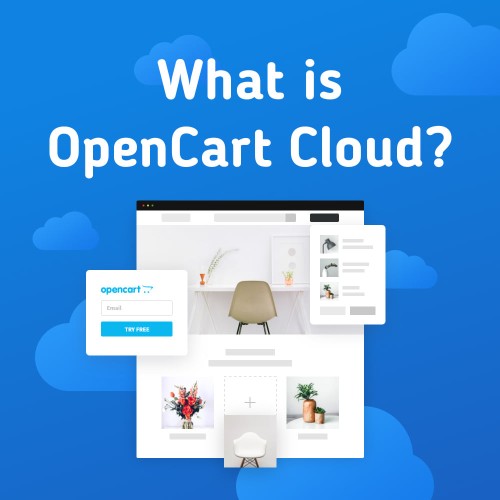Collecting customer feedback will help retailers or eCommerce store owners improve their business. It provides businesses with a better understanding of their customer’s needs and helps them to identify their level of satisfaction.
A survey tool automates the process of capturing feedback from walk-in customers at Retail stores, Shops, Outlets, Supermarkets, and Malls at multiple locations. And not just that, there are online survey tools that can be effectively used to capture feedback from online shoppers.
Be it an online store or in-store experience, a survey tool enables retailers or store owners to easily take valuable customer feedback without biases in different ways.
Survey Channels to Use in Retail & eCommerce
In today's competitive retail landscape, collecting feedback from customers has become more important than ever. It not only helps retailers improve their business but also builds a strong relationship with their customers. To effectively gather feedback, retailers can utilize various channels at their physical stores.
Channels You Can Use to Collect Feedback at Retail Stores
1. In-Store Survey Kiosk
Installing interactive survey kiosks at strategic locations within the store can provide an immediate and physical way for customers to share their feedback. These kiosks can be placed post-purchase or in high-traffic areas to ensure easy accessibility. Customers can quickly and conveniently provide their feedback, allowing retailers to ask the right retail survey questions and gather valuable insights in real time.
2. Survey App on Tablet, iPad, or Android
Equipping store staff with tablets or iPads loaded with a survey app can enable them to approach customers directly for feedback. This approach offers flexibility and mobility, allowing staff to engage customers on the sales floor or at the checkout counter. By initiating conversations and guiding customers through the survey on these devices, retailers can create a personalized touch and encourage feedback participation.
3. Email/SMS for Post-Purchase Survey
Sending post-purchase surveys via email or SMS is an effective way to gather feedback from customers after they have left the store. This approach gives customers time to reflect on their experience and provide more detailed feedback. Retailers should ensure that these surveys are concise and engaging, making it easy for customers to respond and increasing the likelihood of higher response rates.
By incorporating these channels, retailers can capture feedback from various touchpoints and gain a comprehensive understanding of their customers' needs and satisfaction levels. It is essential for retailers to leverage these channels effectively to improve their business operations and enhance customer experiences.
Survey Channels you can use for eCommerce Feedback Collection
1. Website Widgets like Pop-ups
Website widgets, such as pop-ups, provide a convenient way to capture feedback directly on the website while the shopping experience is still fresh in the customer's mind. By strategically timing the pop-ups to appear at appropriate moments during the customer journey, online retailers can gather immediate insights and address any concerns or issues promptly.
2. Emails
Emails are a familiar and easily accessible channel for reaching out to customers and gathering feedback. Online retailers can send post-purchase surveys or feedback requests to their customers' inboxes, allowing them to reflect on their shopping experience and provide detailed insights. To encourage survey participation, it's essential to craft compelling email subject lines and content that clearly communicate the value of providing feedback.
3. SMS
SMS surveys offer a quick and direct way to engage customers and gather their feedback. By sending short and concise surveys via text messages, eCommerce stores can capture insights from customers on the go. To maximize response rates, it's important to keep the surveys simple and include a clear call-to-action, making it easy for customers to provide their feedback with just a few taps on their smartphones.
4. In-app or In-product Widget
For eCommerce stores with mobile apps or specific products, integrating feedback widgets within the app or product interface can minimize friction and encourage feedback participation. By seamlessly integrating the widget, online retailers can gather insights without disrupting the user experience. This approach allows for real-time feedback, enabling businesses to address any issues promptly and enhance the overall user experience.
By leveraging these channels, eCommerce stores can establish a robust feedback ecosystem that captures insights from various touchpoints. This comprehensive understanding of customer satisfaction and areas for improvement enables online retailers to make data-driven decisions, enhance their offerings, and ultimately provide a better shopping experience for their customers.
Tips to Make the Most of Your eCommerce or Retail Surveys:
When it comes to creating surveys, there are some tips that can help you gather effective customer feedback and data about your retail or eCommerce stores. Here are some tips to help you out:
1. Mobile Optimization
In today's digital age, it's crucial to ensure that your surveys are mobile-friendly. With more and more customers accessing surveys on smartphones or tablets, optimizing your surveys for mobile devices is essential. This ensures a smooth and user-friendly experience, increasing the likelihood of higher response rates.
2. Incentivize Participation
To encourage survey completion, consider offering incentives to your customers. This could include discounts, loyalty points, or even the chance to enter a prize draw. By providing an incentive, you create a sense of value for your customers, increasing their motivation to participate in your surveys.
3. Consistent Branding
Maintaining consistent branding across all survey channels is important for reinforcing your brand identity. From the design elements to the tone of voice, ensure that your surveys align with your brand's visual and verbal identity. This consistency not only enhances brand recognition but also creates a cohesive and professional image for your business.
4. Utilize Analytical Tools
To make the most of your eCommerce or retail surveys, it's important to utilize analytical tools. Many eCommerce survey software and tools can help you gather and analyze data from different survey channels, providing you with actionable insights. By analyzing the data, you can identify trends, preferences, and areas for improvement, allowing you to make data-driven decisions and enhance your offerings.
By implementing these tips, you can maximize the effectiveness of your eCommerce or retail surveys. Mobile optimization ensures accessibility, incentivizing participation increases response rates, consistent branding reinforces your brand identity, and analytical tools provide valuable insights. Taking these steps will enable you to gather valuable feedback from your customers, enhance their experiences, and ultimately grow your business in the competitive retail and eCommerce landscape.
Conclusion
Understanding your customers is crucial to enhancing your business in the dynamic world of retail and eCommerce.
For brick-and-mortar stores, in-store survey kiosks create a seamless bridge between the shopping experience and feedback. Tablets and iPads allow staff to engage customers personally, fostering loyalty. Post-purchase surveys via email or SMS offer customers the chance to reflect on their experience.
eCommerce stores utilize website widgets, emails, SMS surveys, and in-app/product widgets to capture valuable insights. These channels create a comprehensive understanding of customer satisfaction, enabling continuous improvement and delivering an unparalleled shopping experience.



Login and write down your comment.
Login my OpenCart Account